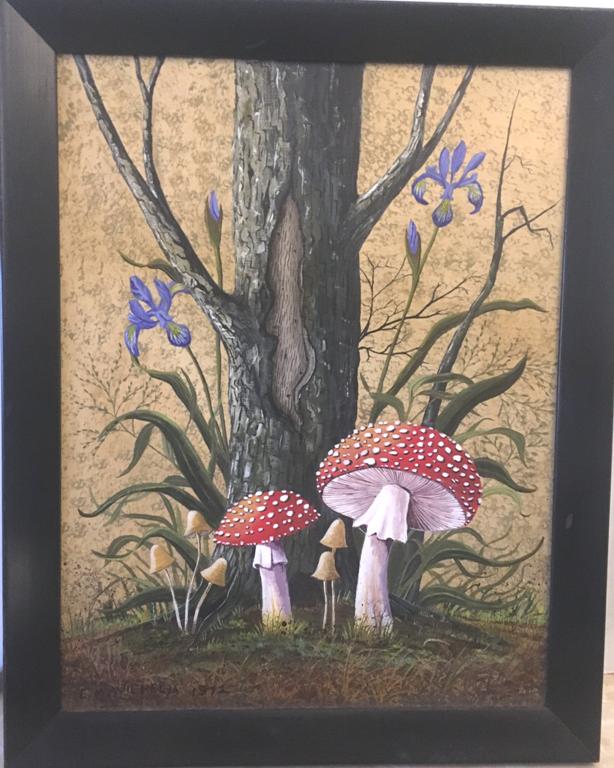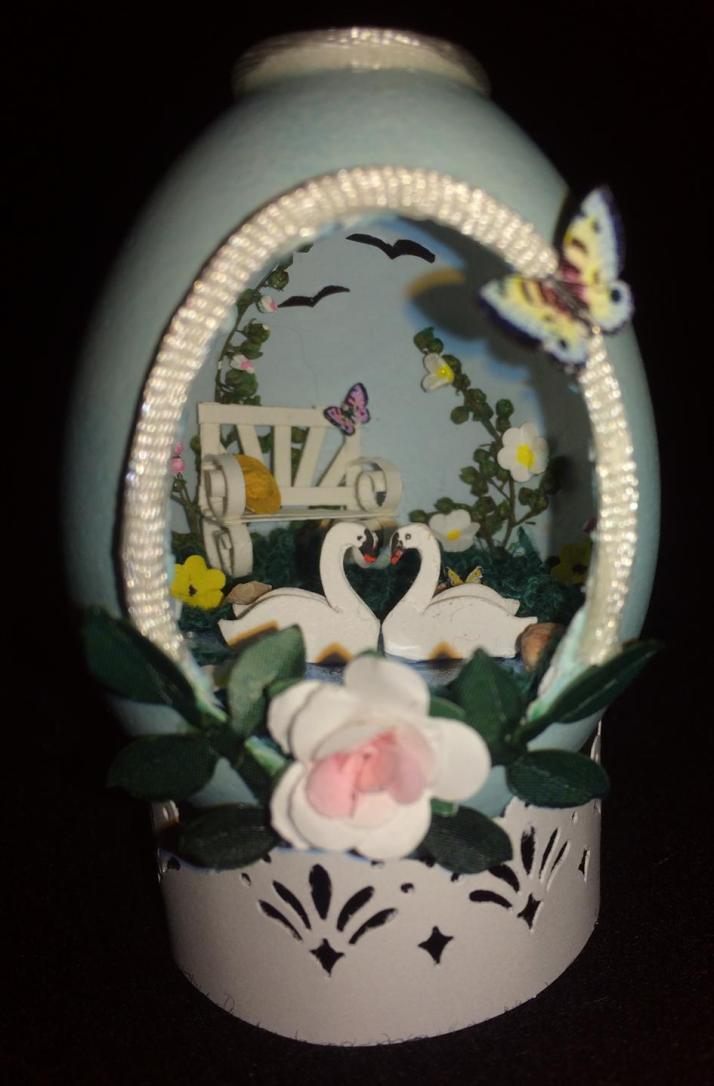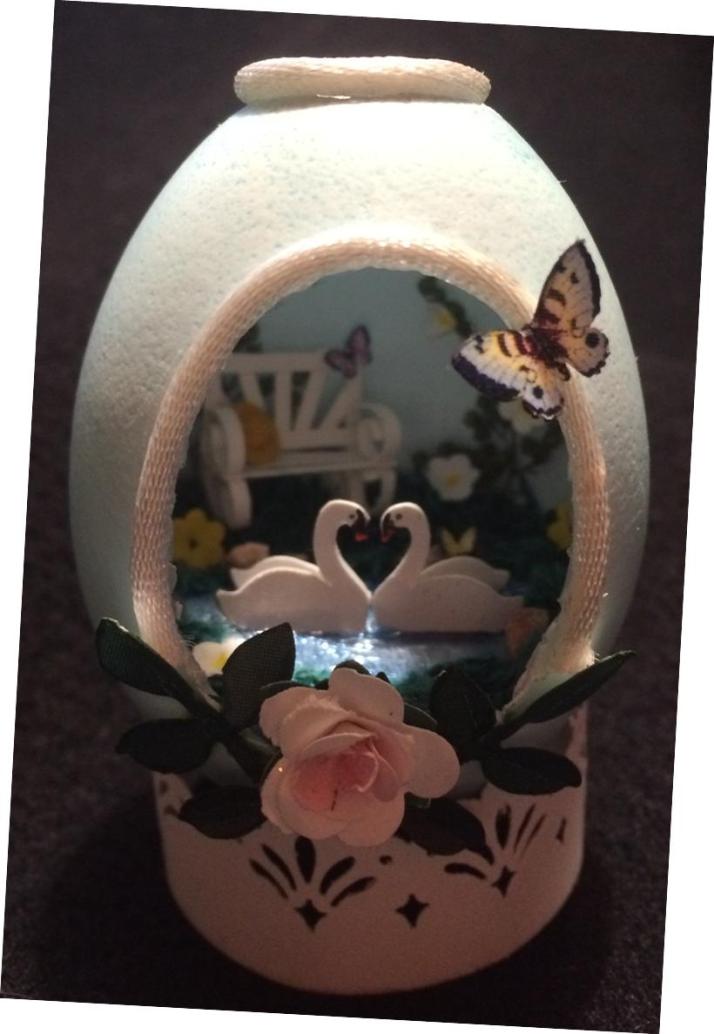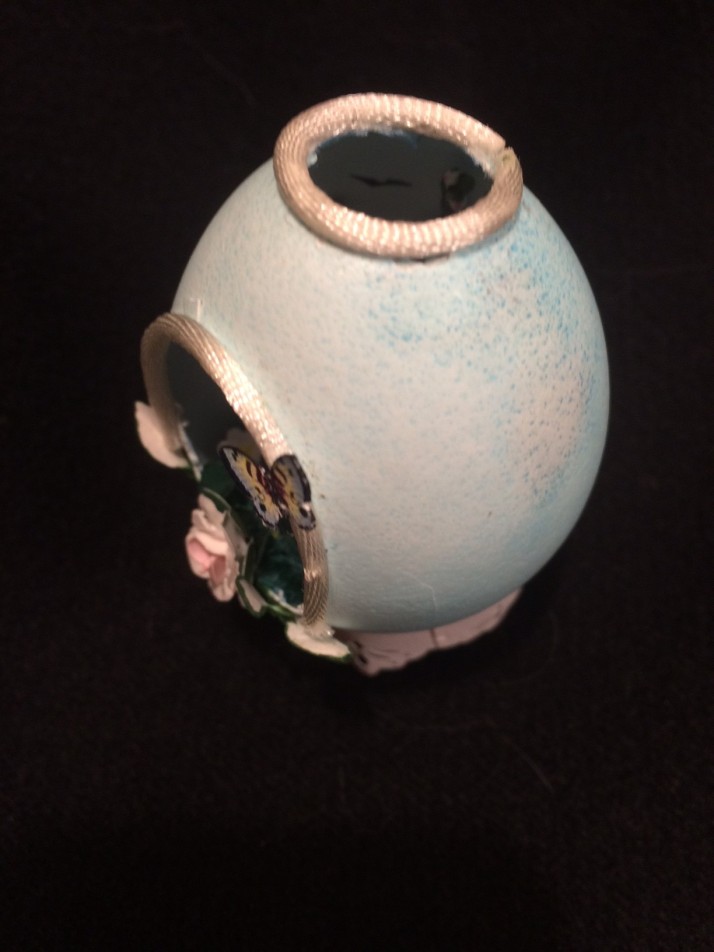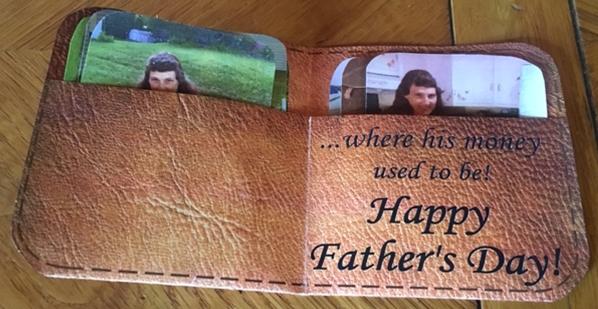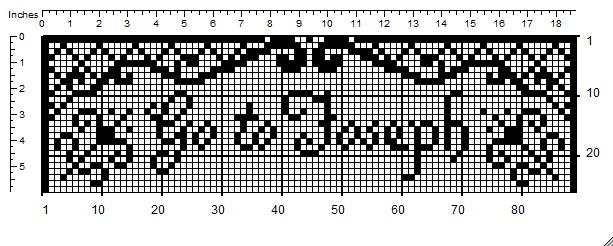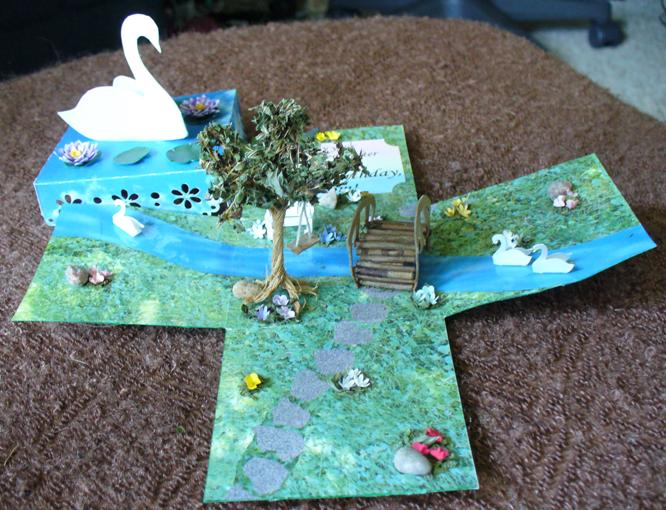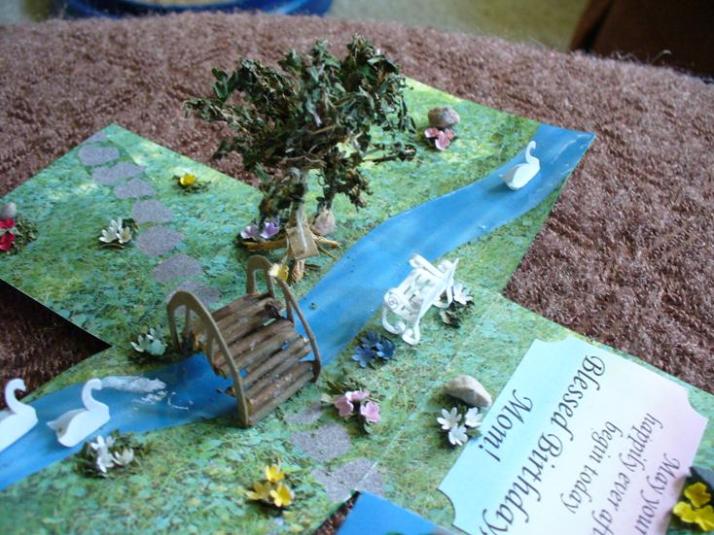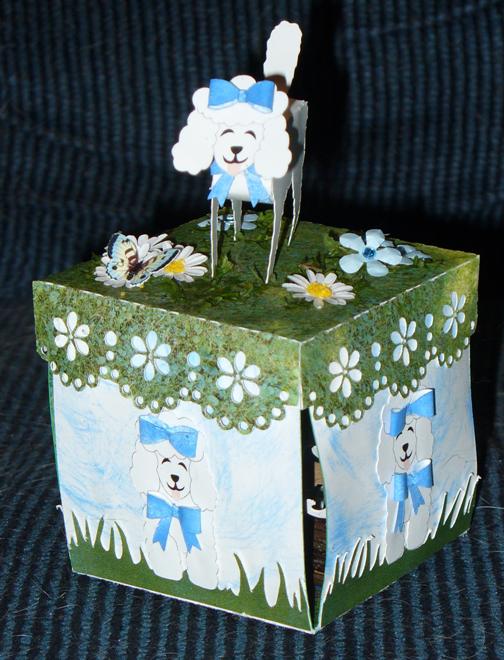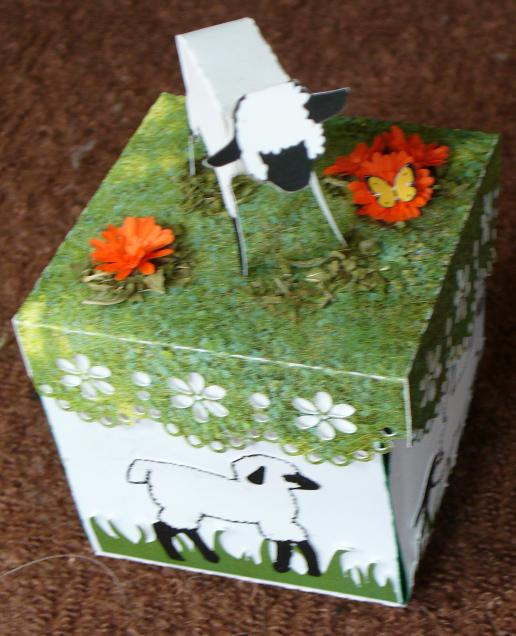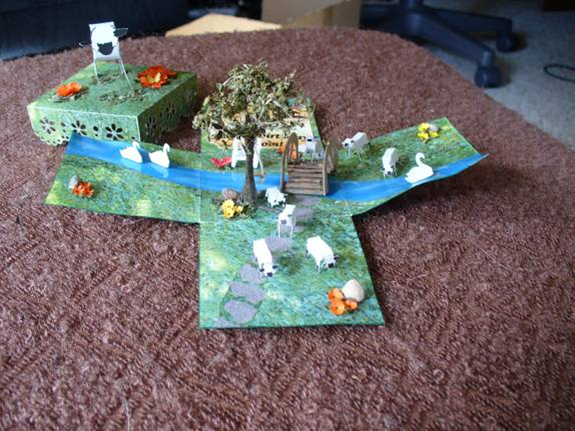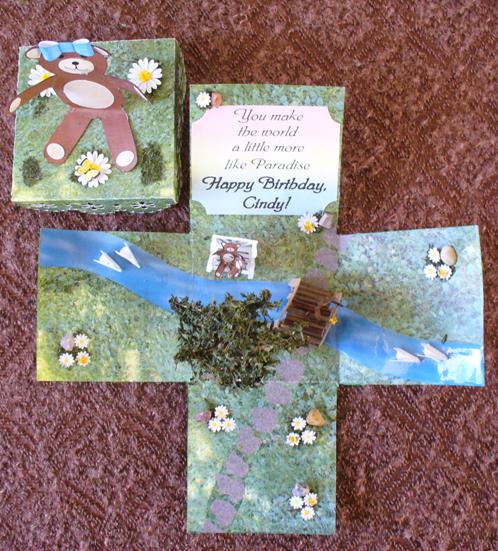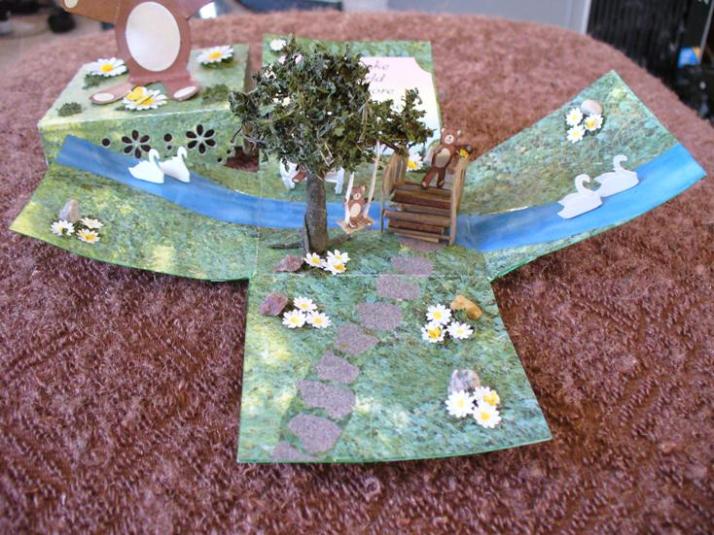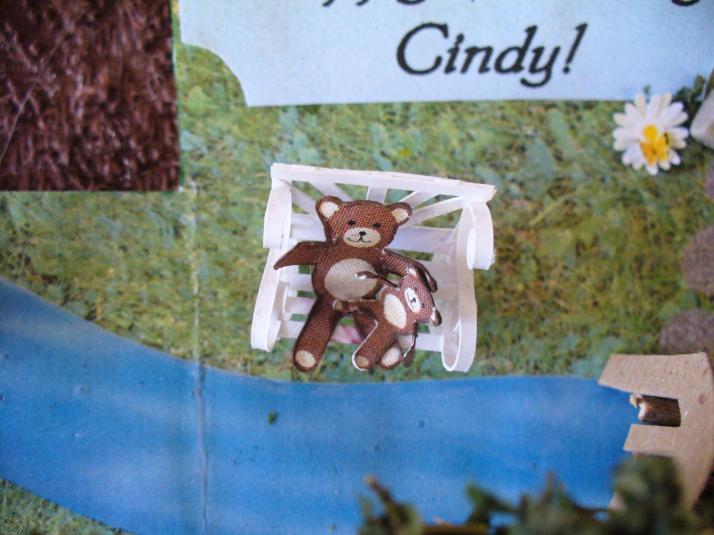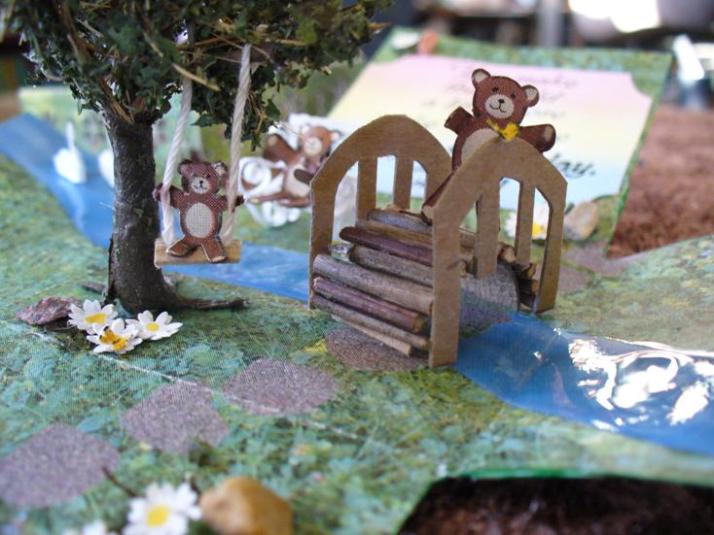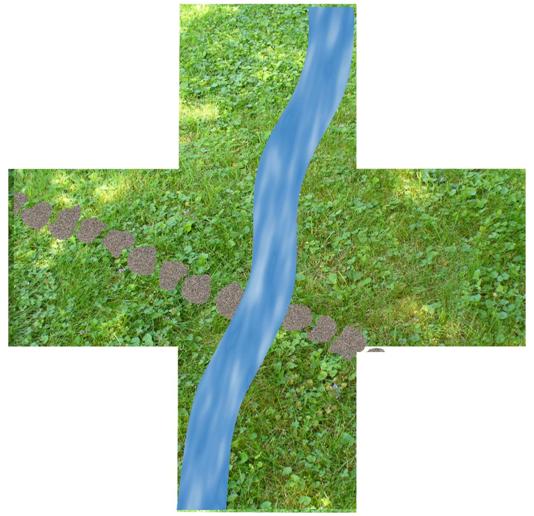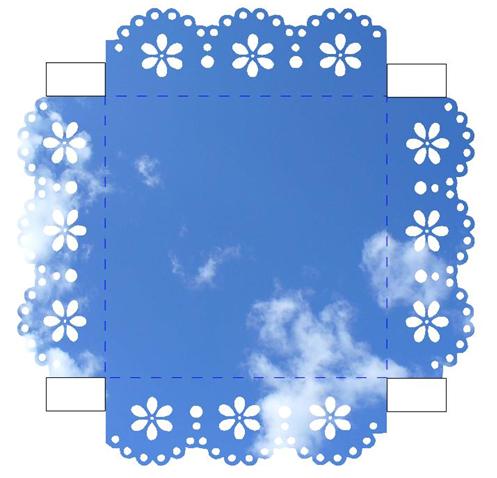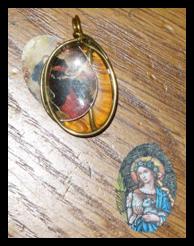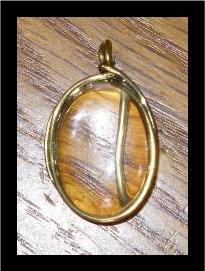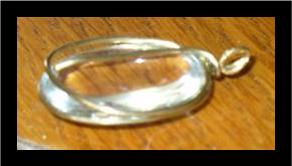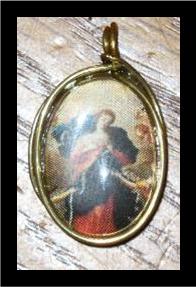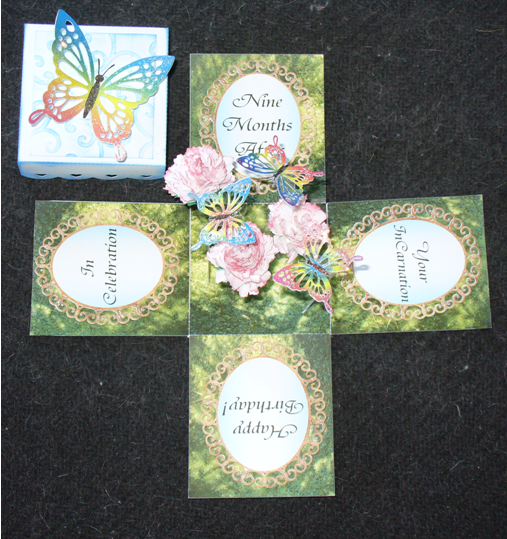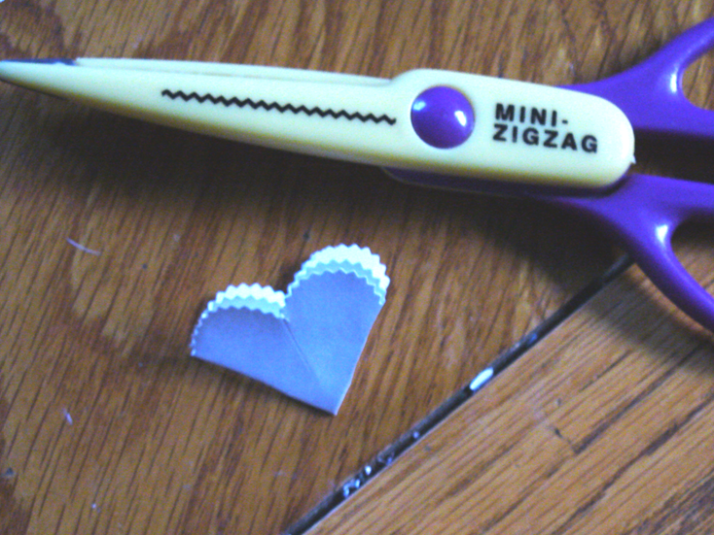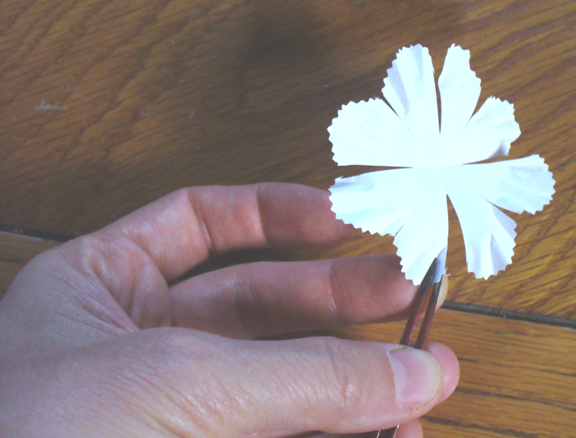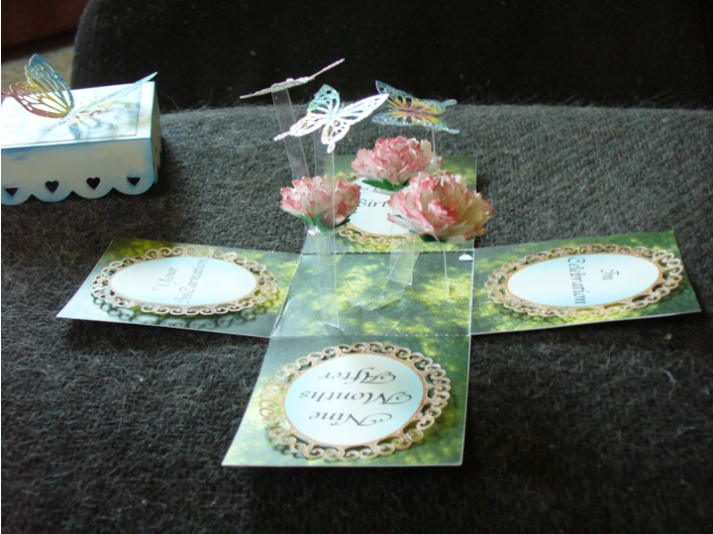JMJ
In the process of donating baby items to ministries that serve mothers in crisis pregnancies,
my prince and I came across a related ministry, “Gifts of Love”,
that provides burial gowns and pouches, miniature caskets and memory boxes
to families who have lost babies to miscarriage or stillbirth.
As I was talking with the lady who coordinates the ministry,
I noticed that each casket had a crocheted cross on the inside of the lid.
I could make those! (and I did for a while)
But they also needed little mementos to go in the memory boxes,
and over time, I developed a pattern for tiny crocheted angels.
Since “Gifts of Love” already had someone making crosses, I focused on the angels.

This little angel is trimmed in blue, for a baby boy.
I’ve also trimmed them in pink for girls,
or in gold, for those whose gender is unknown.

The holy card in the memory box, with Jesus holding a baby
& a guardian angel kneeling before Him,
is from Holy Card Heaven.
It could be taken to be Jesus handing the baby to the angel,
or the angel giving the baby to Jesus.
The inscription reads:
I entrust him to you;
keep him safe for all eternity.
Pattern for Crocheted Angels
Please alert me to any mistakes in the pattern!
I’ve caught several already, but I’m too close to the project to be entirely objective
(I go on kinesthetic automatic pilot).
I use size 30 crochet cotton and a size 11 steel crochet hook.
The first ch 3 always counts as the 1st dc
Make sure to count your stitches in rounds 1-7–it’s easy to add or subtract one!
Head:
R 1: Starting with a magic circle, ch 3, 15 dc in loop. Sl st in top of beginning ch 3, pull magic loop tight. (16 dc)
If you prefer not to start with a magic circle, ch 4, 15 dc in first ch, sl st to top of original ch 4.

My apologies for the fuzzy photo
R 2-4: ch 3, dc in each dc around. Sl st to top of beginning ch 3. (16 dc)
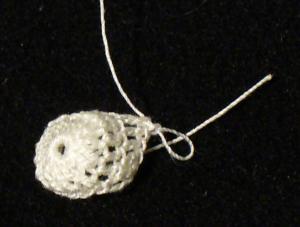
Stuff head. I use rolled up scraps of fabric, but any white stuffing should be fine.
Neck (continued from head):
R 5: ch 1, sc in same stitch as joining, *skip 1 dc, sc in next dc. Repeat from * around. sl st in 1st sc. (8 sc) This gets hard to see, especially with such fine thread. Just make sure you have 8 sc by the time you’re done with the round!
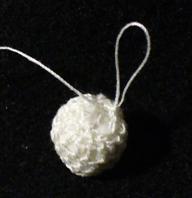
R 6: ch 1, sc in same stitch as joining, sc in each sc around (8 sc)
Bodice (continued from neck):
R 7: ch 3, dc in same space as joining, 2 dc in each sc around (16 dc)
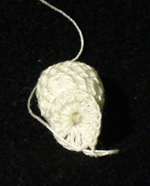
R 8: ch 4, trc in each dc around (16 trc)

Skirt (continued from bodice):
R 9: ch 4, dc in same stitch as joining. *Skip one trc, (dc, ch 1) 3x in next stitch. Repeat from * around, ending with dc, ch 1 in same stitch as original ch 4, sl st in 3rd stitch of original ch 4 (this puts you in position to start the next round without having to sl st to the center of the shell). (8 shells, each 3 dc with ch 1 in between and ch 1 between shells)
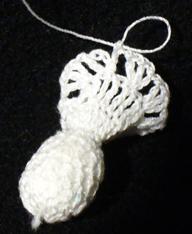
R 10: ch 5, dc in same stitch as joining, ch 1. *In center dc of next shell (ie., skip ch 1, dc, ch 1, dc, ch 1), dc, ch 2, dc, ch 2, dc, ch 1. Repeat from * around, ending with dc, ch 1 in same stitch as original ch 5, sl st in 3rd st of original ch 5 (8 shells, each 3 dc with ch 2 in between, ch 1 between shells)
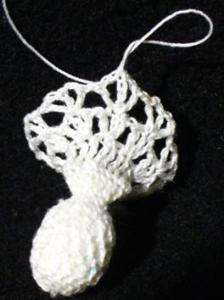
R 11: Ch 5, dc, ch 2 dc. *In center dc of next shell (ie., skip ch 2, dc, ch 1, dc, ch 2), (dc, ch 2) 3x, dc. Repeat from * around, ending with dc, ch 2, dc, ch 2, in the same stitch as the original ch 5, sl st in 3rd st of original ch 5. (8 shells, each with 4 dc with ch 2 in between, no ch between shells)

R 12: sl st into next loop. Ch 5, dc, (ch 2, dc) 3x. *In center loop of next shell (ie., skip dc, ch 2, 2dc, ch 2, dc), (dc, ch 2) 4x, dc. Repeat around, ending with sl st in 3rd st of original ch 5. Fasten off and weave in ends.
Trim: With trim color, right side facing, fasten on in 2nd loop of shell (I pull a loop of the new thread through the loop on the skirt & ch 1 to fasten). Ch 1, sc in same loop, ch 3, sc in next loop, *ch 3, (sl st in next loop)2x, (ch 3, sc in next loop) 2x Repeat from * around, ending with sl st in next loop twice, ch 3, sl st in first sc. (ch 3, sc in main part of shell, sl st when transitioning from one shell to the next). Fasten off & weave in ends.
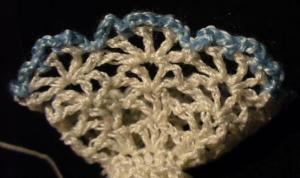
Arms & hands:
R 1: Ch 12, 2 dc in 4th ch from hook, 3 dc in next ch, ch 3, sl st in same ch as last dc. This cluster of dc will form the hands.

Remove hook from loop and insert it into the same stitch in which you made the 2dc (the far end of the clump of dc you just made).
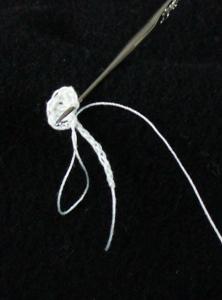
Catch the loop you dropped
 and pull it through to “fold” the hands.
and pull it through to “fold” the hands.

Ch 8, sl st to first ch to form a circle.

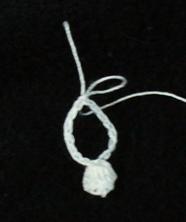
R 2: ch 3, dc in each ch until you get to the base of the hands. 3 dc in same ch, ch 3, sl st in same ch.

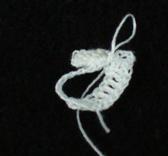
Folding the hands away from you, sl st in base of hands on the far side,
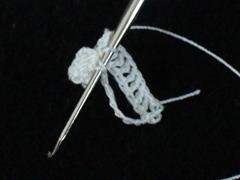
ch 3, 3 dc in same place.

dc in each dc around.
The dc following your 3dc next to the hands will be hard to find & hard to get into,
since the previous stitch was packed so tight with stitches–but if you miss it,
there will be a gap in the sleeve. Be persistent :).
Join to top of original ch 3. Fasten off, leaving a tail of about 5″ for sewing the angel together.
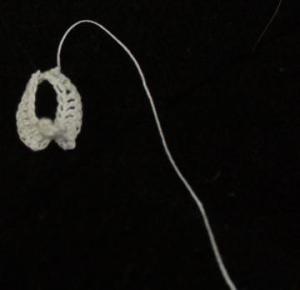
Work the arms down over the top of the angel’s head, hands pointing up (it’ll be a tight fit).
Wings:
R 1: ch 7, sl st in first ch to form ring
R 2: ch 6, trc in ring. Ch 2 trc in ring 5 times (7 trc). DO NOT JOIN!
R 3: Turn. ch 5, dc in 1st trc, ch 2, dc in same trc, *ch 1, dc, (ch 2, dc, ch 2, dc) in next trc. Repeat from * around (7 shells, each with 3 dc, ch 2 between dc, ch 1 between shells)
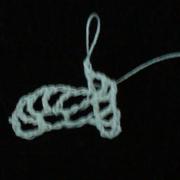
R 4: Turn. ch 4, *(dc, ch 2)3x in next dc, ch 2, dc in same dc, *in center dc of next shell, (dc, ch 2) 3x, ch 2, dc in same dc, Repeat from * around, ending with ch 4, sl st in next ch (7 shells, each with 4 dc, ch 2 between dc, no ch between shells, with an extra loop on the shell on each end. Fasten off and weave in ends.
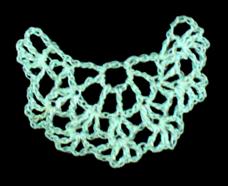
Trim: With trim color, right side facing, attach thread to 3rd ch of first ch 4 of last round. (ch 3, sl st in next dc) 3x, ch 3, pull up a loop in next dc, pull up a loop in next dc, pull last loop through the other two loops on the hook (2 sl st together). *(ch 3, sl st in next dc) 2x, ch 3, pull up a loop in next dc, pull up a loop in next dc, pull last loop through the other two loops on the hook. Repeat from * around, ending with (ch 3, sl in next dc) 3x, ch 4, sl st in next ch. (ch 3, sl in main part of the shell, 2 sl st together when transitioning from one shell to another). Fasten off & weave in ends.
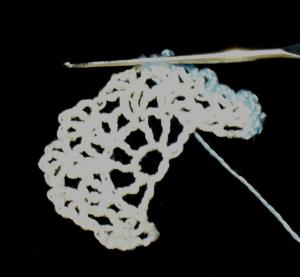
Halo:
With trim color, ch 20, sl st in 1st ch to form a ring, sl st in each chail around. Fasten off, but leave ends.

Assembly:
Thread the long thread from the arms into a needle.
Attach arms to bodice by taking the needle into the bodice just under the arms, coning out just over the arms, going into the top of the arms & into the body/head.
Bring needle up through the back of the top of head between the first 2 rounds of the head

and attach halo with two small stitches (one to the right & the other to the left). Insert crochet hook up through inside of body and head to catch the “tails” of the halo and pull them into the head (hide them without adding bulk to the halo).

Bring needle into head at halo and out at the back of the head. Thread wings onto needle through the center circle (the right side of wings facing the body of the angel) and fasten with a few stitches into the bodice and skirt along the center back. Bring needle up through the body & head, over a tiny bit & back down through the body/head (to secure the thread). Cut thread.

Gently tug various parts of the angel into the shape you like.
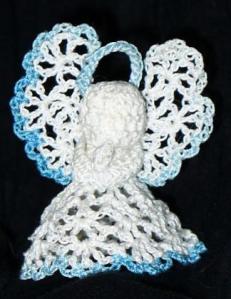
Other stitch patterns also work well in the skirt and wings,
if you’re motivated to play around with them :).
Since I’ve started making these angels, it’s remarkable how many people I’ve come across
who have lost a baby or know someone who has.
Suddenly they started coming out of the woodwork!
It’s been such a blessing to be able honor their suffering,
and to give them an angel (or promise to make one) in memory of their little one.

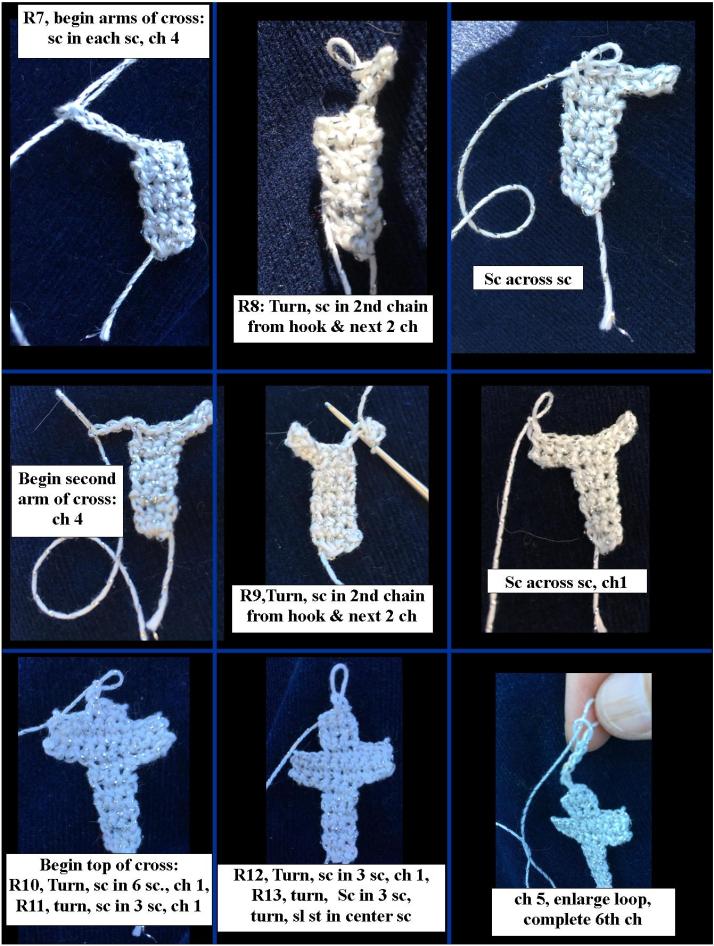
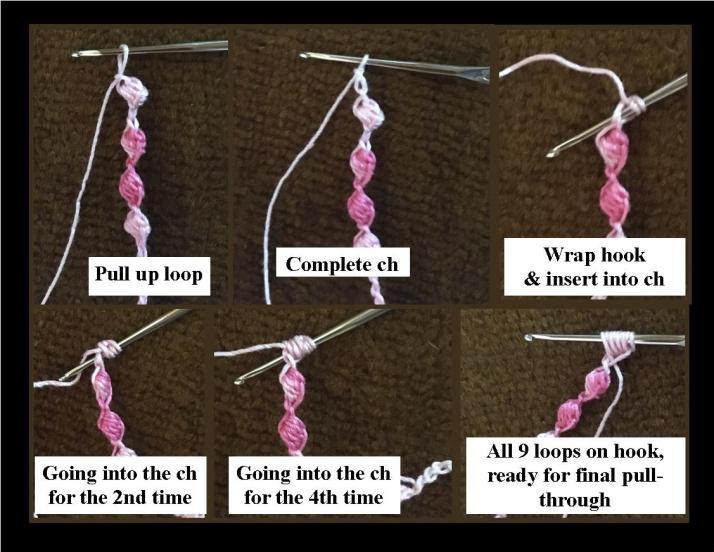

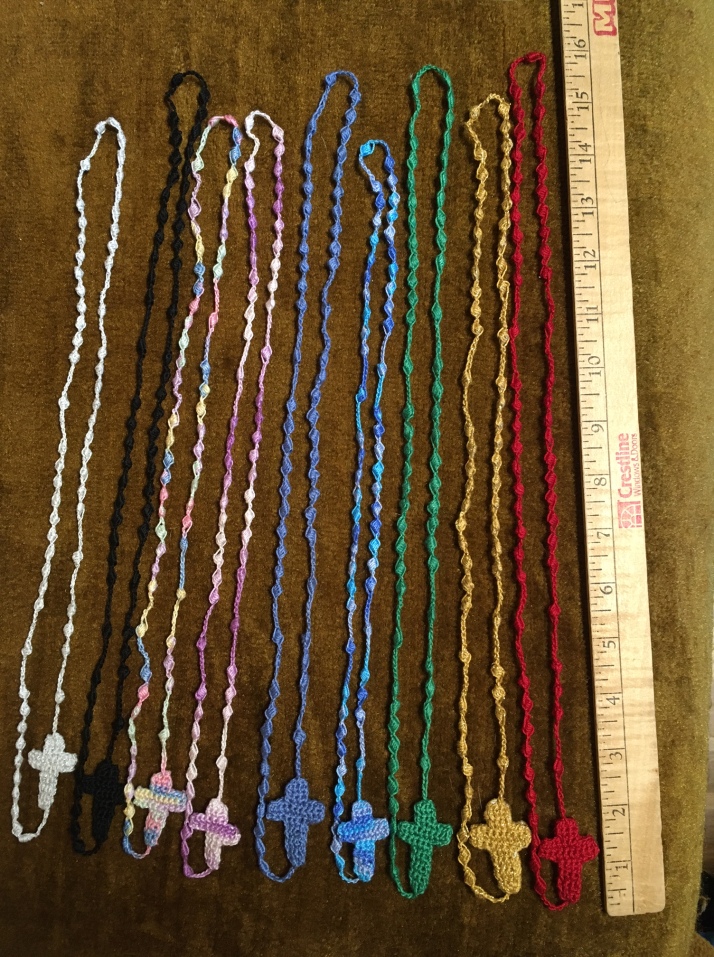


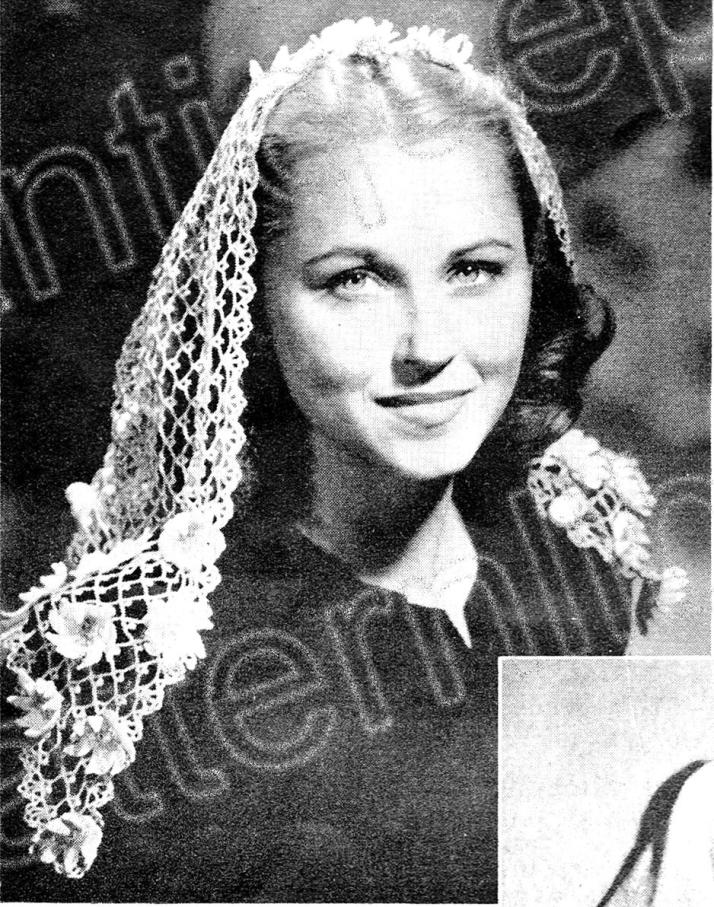
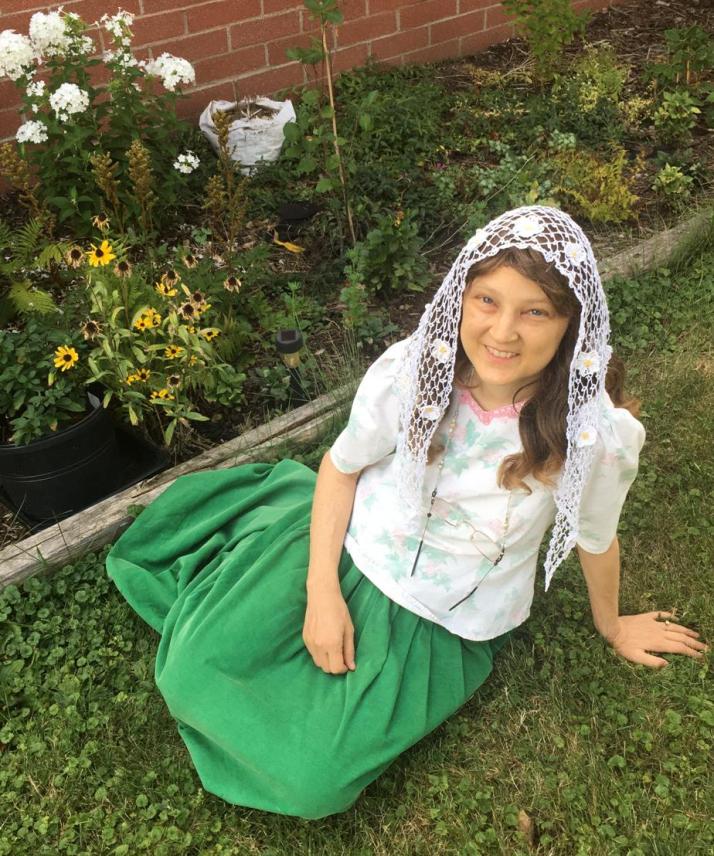


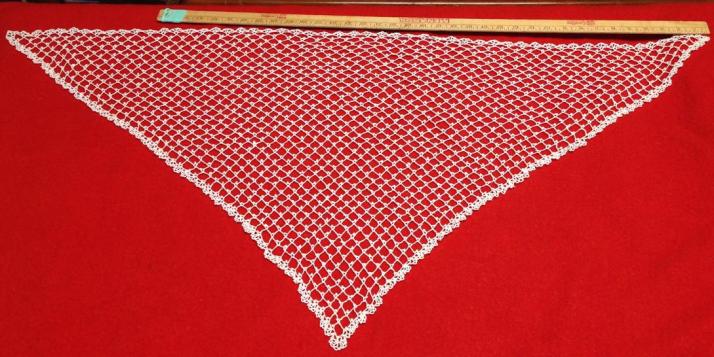

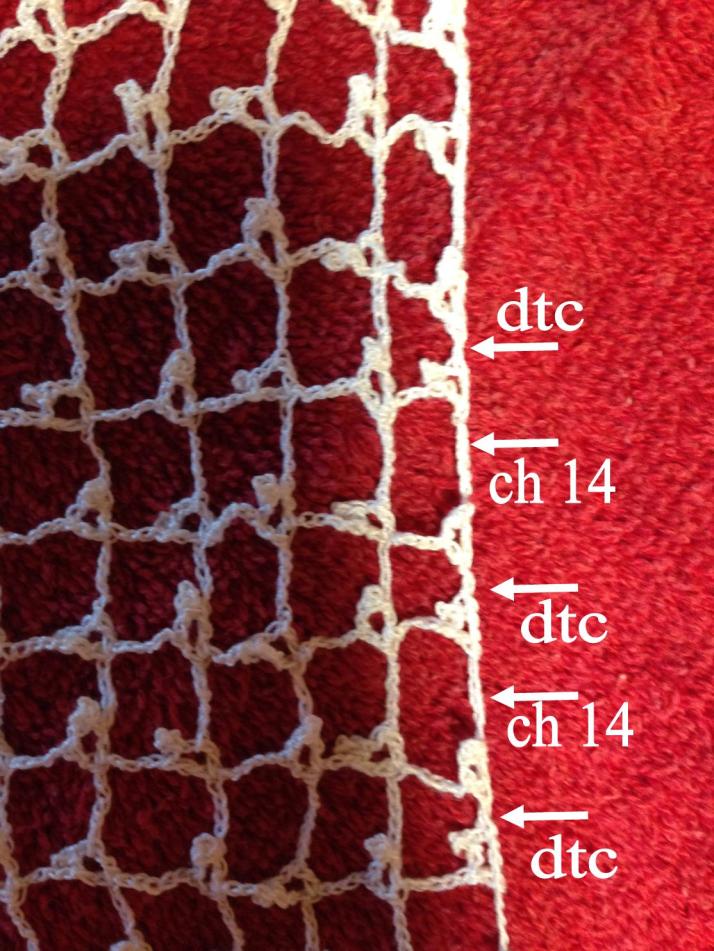

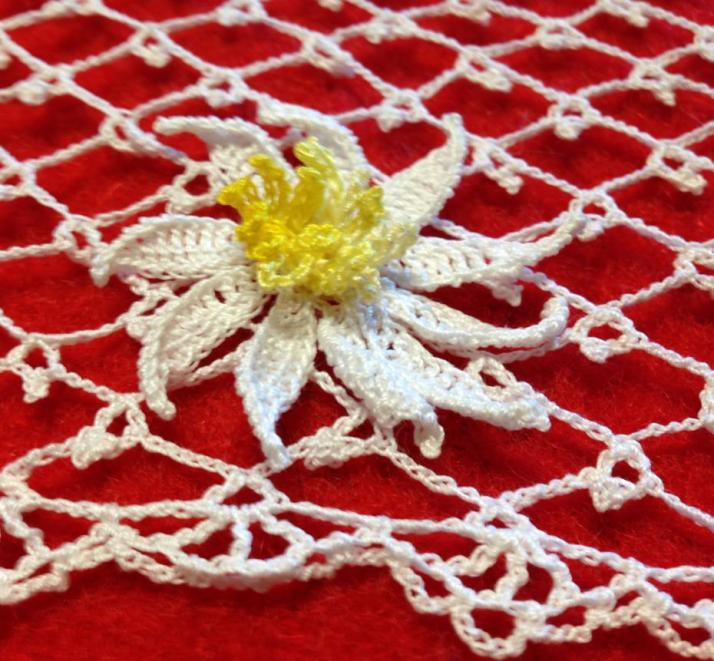

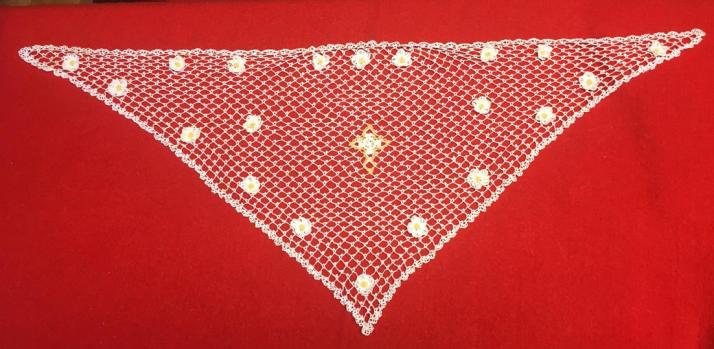
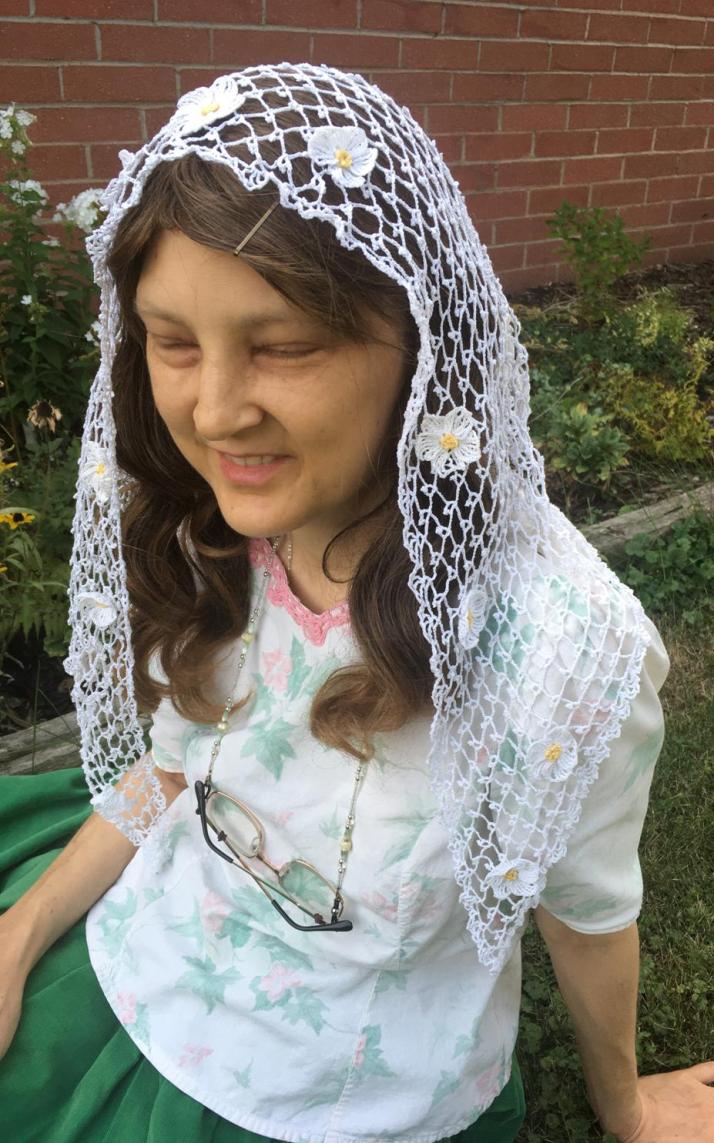

 <a href=”
<a href=”